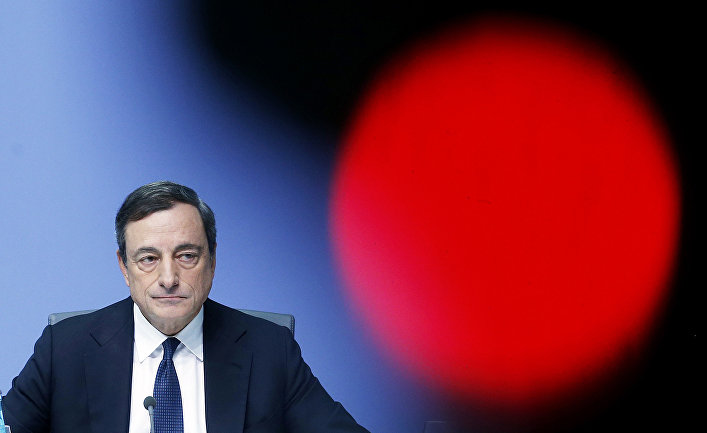In January 2015 the European Central Bank announced a two-year program of Quantitative Easing (QE), while in December 2015 the American Federal Reserve system effectively completed its own program. The gap between the two dates was a year, in which the impotence of the central banks was accompanied by another new trend – expectations in an information-based society are a great deal higher than they used to be. In 2015 the key interest rate meant not so much more than whether investors actually believe it will change in the future, and even more if it will have any effect on any more management-able reality.
From the macro-economic viewpoint the news was shorter for 2015 by a whole month. On January 22 the Head of the European Central Bank, Mario Draghi announced the European program of Quantitative Easing. QE, in its Eurozone guise differed from the QE which was formally completed in the USA in October of 2014, although the significance of these events was similar. In a standard version of classic monetary policy a central bank tries to control the dynamics of economic growth indirectly via credit rates, whilst still maintaining the inflation target. So the ECB and the Fed are both in a situation in which the “handle” of control was effectively screwed down to zero – in the range of 0 – 0.25% per annum for the Fed's key rate, and 0.05% annually for the ECB base rate. QE, or bank refinancing with assets as security, in the ECB's case hopes simultaneously to resolve some of the problems with European debt.
The European Central Bank has bookended 2015 with QE announcements — what happens next year: https://t.co/jGaUSF9FbV
— Elaine Moore (@ElaineDMoore) December 8, 2015
Nevertheless on 22 January, very little changed from the viewpoint of process control – lowering rates to promote growth didn't work out on either side of the Atlantic. The work of thousands of the best-qualified economists in 2015 was to lick world financial systems into a shape in which the “control handle” of key rates was not merely a decorative element, but for the boards of directors of organizations, controlling one of the world's two currency reserves – it was useless. On the 16 of December 2015 the Fed's Board of
Directors raised its key interest rate into the range of 0.25-0.5% per annum. This ended the Fed's period of helplessness, which had begun on 16 December 2008, during which interest rates oscillated between 0% of 1% per annum. One quarter of a percentage point is all the Fed could manage over a year. The ECB, though, couldn't manage better – its program of Quantitative Easing in the Eurozone, aimed at buying up assets, including state bonds, up to €1 trillion, ends by the summer of 2016 – unless it is extended. By that time the Fed, as is suggested, will already have the freedom to change its rates in one or other direction by half a percentage point – and by a whole percentage point by the end of the year.
Ten years ago the mention of this kind of freedom would have been laughed out of the window by any employee of a central bank. But analysts witnessed an entire 2015 of hot-tempered discussion about whether European QE could work (until by coincidental evidence, it worked), and whether the Fed could hike interest rates (for which markets had to wait nine months) – and what the results would be? However, it was not all entirely pointless – it was in 2015 that market expectations, based on professional evaluations and prognostications, became as significant a factor as the actions of regulators which were limited in scope. The parameters of QE are not as important as the information about whether they would work, and work in practice. Whether the Fed will hike the interest rate is less important than whether there'd be an explanation for doing so.
What the European Central Bank's decision to extend QE means for savings and mortgages https://t.co/X6YjyNSw5z
— Indy Business (@TheIndyBusiness) December 3, 2015
The entire situation has a particular interest for Russia, where inflation expectations for the whole of 2015 were more important than the factors which have a direct impact on prices, and the expectation of falling oil prices is more important that the actual prices of oil. Bank of Russia caught the idea perfectly, converting it into its very own kind of “information machine” which is quite natural for an information society, but somewhat untypical for Russia. Alongside this, after the rouble devaluation of October 2014 came an answer to the question — “So why was the rouble in autumn of 2004, when oil prices were the same, twice as high in relation to the dollar?” which wasn't in the Central Bank's interests. The explanation was that the population's confidence in economic policy of a consolidated government had dropped by half, but the Central Bank found itself unable to do much more than issue a statement.
Meanwhile, the “informatization” of monetary policy around the world has one particularly unpleasant aspect. In 2016 and after its influence won't disappear, but instead will become far greater. In August 2015 the collapse of the Shanghai Stock Exchange, which seems to have little significance on its own, apparently became one of the main triggers of a new collapse in oil prices to bring further problems to the Russian economy. Too much news influence on markets is good news only for reporters.






